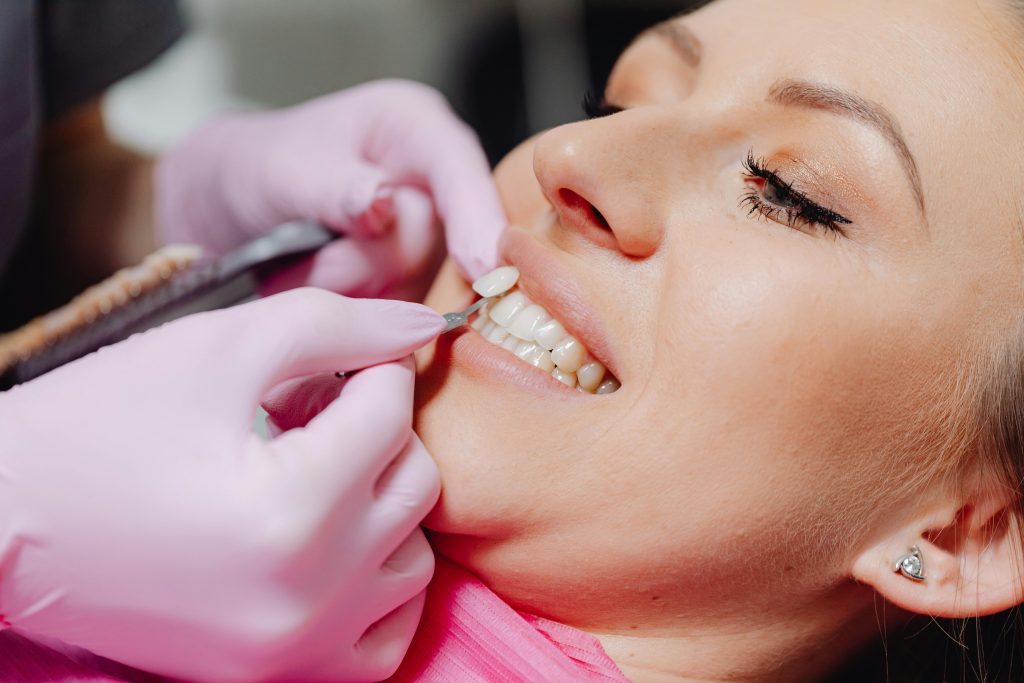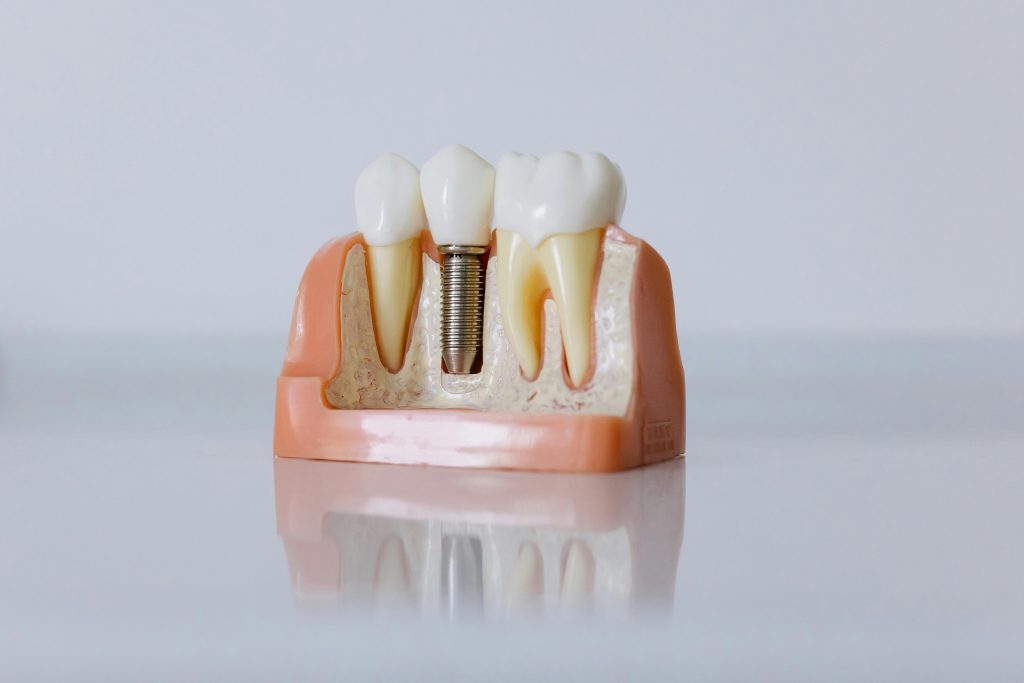This article explores a range of dental procedures that can enhance both the appearance of your smile and your self-esteem. Modern dentistry offers solutions to improve both the function and aesthetics of your teeth. Regular dental visits from an early age can lay a strong foundation for lifelong oral health, ensuring you can smile confidently well into adulthood.
What Are Dental Veneers?

Dental veneers are thin shells made of porcelain or composite resin that cover the front surfaces of teeth. This versatile cosmetic treatment can hide a variety of imperfections, such as stains, chips, or gaps. Porcelain veneers are known for their durability and natural appearance, mimicking the transparency of natural enamel. During an initial consultation, your dentist will discuss your expectations and goals. A small amount of enamel will be removed from the teeth receiving veneers to ensure a seamless fit. The impressions are sent to a dental lab, where each veneer is meticulously crafted to match the desired size, shape, and colour. At your final appointment, the veneers are bonded to your teeth with dental cement, instantly transforming your smile.
A radiant smile can significantly boost confidence, enhancing both social and professional interactions. Many patients report feeling more self-assured and willing to smile openly when they know their teeth are flawless. Veneers are not only stain-resistant and easy to maintain, but with regular dental check-ups and good oral hygiene, they can last for years. This makes them a popular choice for those seeking a long-lasting cosmetic dental solution.
How Does Teeth Whitening Work?
A qualified cosmetic dentist can perform teeth whitening to restore a youthful, brighter appearance. In-office treatments typically involve applying a high-concentration bleaching gel, which is then activated with a laser or special light to produce fast results. Alternatively, at-home kits offer the convenience of gradually whitening your teeth over several weeks using custom-fitted trays and lower concentration bleaching agents. Both methods are effective and safe, though some individuals may experience temporary gum irritation or tooth sensitivity, which typically resolves after treatment.
To maintain the whitening results, it’s advisable to avoid foods and drinks that can stain your teeth, such as red wine, coffee, and tea. Regular brushing, flossing, and periodic touch-ups, as prescribed by your dentist, will help prolong the effects. A brighter smile can elevate your facial aesthetics and boost your self-confidence, encouraging more positive interactions in social situations. Cosmetic dentists can design a treatment plan tailored to your dental goals, allowing you to achieve and maintain a beautiful smile.
What Are Dental Implants?

Dental implants provide a long-lasting, stable solution for replacing missing teeth. They replicate the natural tooth structure, consisting of a titanium implant surgically placed into the jawbone, with an abutment connecting the prosthetic teeth and a custom-made crown. The implants fuse to the jawbone through a process called osseointegration, ensuring a secure fit and preventing bone loss. This integration supports facial structure, improves bite alignment, and promotes long-term dental health.
The dental implant procedure begins with a thorough oral examination by a dental implant specialist, who may use CT scans or other advanced imaging techniques to determine the precise location for the implants. Local anaesthesia is used during surgery, followed by several months of healing. After the implant fuses with the bone, an abutment or crown is attached to complete the restoration. Dental implants are popular for their natural appearance and feel, allowing patients to smile, eat, and speak confidently with a stable replacement tooth.
Can Orthodontics Improve My Smile?
Orthodontics is an excellent way to improve your smile and correct dental misalignments, enhancing both aesthetics and functionality. For many people, the process involves choosing between traditional braces and clear aligners, such as Invisalign. Traditional braces consist of metal brackets and wires, which gradually shift the teeth into better alignment. They are highly effective, especially for more complex cases. On the other hand, clear aligners offer a more discreet option. These custom-made, removable trays work to gently straighten teeth and are nearly invisible, making them an appealing choice for those concerned about aesthetics during the treatment process.
The length of time required for orthodontic treatment varies depending on the severity of the alignment issues. While traditional braces may take a few years to deliver the desired results, clear aligners typically offer quicker treatment times for mild to moderate cases. Regular check-ups and adjustments with your orthodontist are essential to ensure steady progress. During these visits, the orthodontist will assess the treatment’s effectiveness, make necessary adjustments, and provide guidance on how to care for your teeth and braces or aligners.
After your orthodontic treatment is complete, maintaining the alignment is equally important. A retention period follows, during which retainers are worn to ensure the teeth stay in their new positions. This phase helps prevent the teeth from shifting back to their original alignment. To ensure long-term success, it’s crucial to maintain good oral hygiene and continue with regular dental check-ups. With proper care, orthodontic treatments can lead to a lifetime of improved confidence and a beautiful, straight smile.
What Is Dental Bonding & Contouring?
Dental bonding and contouring are effective, minimally invasive cosmetic procedures designed to address a range of imperfections in the teeth. Bonding involves applying a tooth-coloured composite resin to the surface of a tooth to correct chips, cracks, or gaps. The resin is carefully sculpted to match the natural shape of the tooth, then hardened with a special light. Once set, the material is polished to blend seamlessly with the surrounding teeth, restoring a smooth, uniform appearance. This procedure is particularly useful for enhancing the aesthetics of teeth that have minor damage or discolouration.
Contouring often complements bonding by reshaping the enamel to enhance the overall symmetry and alignment of the teeth. In this process, a small amount of enamel is gently removed to smooth rough edges, correct uneven tooth lengths, or improve minor misalignments. It’s a precise and controlled procedure that requires minimal discomfort, typically eliminating the need for anaesthesia. Contouring helps to refine the shape of the teeth, creating a more harmonious and balanced smile.
These two procedures can be completed in a single visit, making them a convenient and efficient solution for individuals looking to enhance their smile without the need for more extensive treatments. The results are natural-looking and long-lasting with proper care, including regular brushing, flossing, and dental check-ups. Dental bonding and contouring offer a quick and relatively affordable way to address minor cosmetic dental issues, boosting confidence and improving the appearance of your smile with minimal downtime.
What Is a Dental Crown?
Custom-made dental crowns are used to restore damaged, weakened, or aesthetically compromised teeth. Crowns are made from durable materials, such as porcelain, ceramics, or metal alloys, and are designed to blend seamlessly with natural teeth. Crowns are typically used to protect teeth after root canal treatments, significant decay, or trauma. A dental specialist will assess the tooth, remove a thin layer of enamel, and send the prepared tooth to a dental lab where a custom crown is made. A temporary crown may be placed while the permanent one is crafted, and the final restoration is cemented during a follow-up appointment.
Dental crowns offer more than just aesthetic benefits. They reinforce weakened teeth, allowing for better function, speech, and chewing. With proper care and regular check-ups, crowns can last for many years, making them an effective long-term solution for dental health and aesthetics.
Can Gum Contouring Enhance My Smile?
Gum contouring is a cosmetic procedure designed to reshape and sculpt the gum line, improving the appearance of the smile. This treatment is especially beneficial for individuals with excess gum tissue or an uneven gumline that reduces the visibility of their teeth. A soft tissue laser is commonly used for the procedure, although traditional surgical methods may also be employed, depending on the extent of correction needed. By removing excess gum tissue, the dentist creates a more balanced and symmetrical gum line, enhancing the overall aesthetic of the smile.
The procedure is generally painless, with minimal recovery time. Swelling and mild discomfort are common but usually subside within a few days. In addition to improving the smile’s appearance, gum contouring can also promote better oral hygiene by reducing pockets where bacteria can accumulate, leading to healthier teeth and gums.
What Is the Role of Dentures?
Dentures are a common and effective solution for replacing missing teeth, helping restore both the functionality and aesthetics of the smile. They come in two main types: partial dentures, which replace only a few missing teeth, and full dentures, which are used when all teeth in an arch are missing. These prosthetics are custom-made to fit the patient’s mouth perfectly, ensuring comfort and a natural appearance. Dentures are typically made from durable materials like acrylic or a combination of acrylic and metal, which provide strength while maintaining a lifelike look. To maintain their effectiveness, dentures require regular cleaning and professional check-ups to ensure they continue to fit properly.
Beyond restoring the ability to chew and speak comfortably, dentures also offer significant benefits to facial appearance. When teeth are missing, the facial muscles can sag, leading to a sunken appearance around the cheeks and lips. Dentures help to restore the natural shape of the face by providing support to the muscles, preventing this sagging and improving overall facial aesthetics. This enhancement can contribute to a more youthful and vibrant appearance, boosting a person’s confidence. With the advancements in denture technology, modern dentures are designed to look and function as naturally as possible, making it easier for individuals to smile, eat, and engage in social situations with confidence.
While dentures may require an adjustment period for wearers to get used to, with proper care and regular visits to the dentist, they can last for many years. Dentists will offer guidance on how to properly clean and maintain dentures to prevent wear, staining, or discomfort. Regular check-ups are important to ensure that the dentures continue to fit well and do not cause any irritation or damage to the gums. With these efforts, dentures remain an affordable and practical option for those looking to replace lost teeth, allowing them to regain full oral function and improve their quality of life.
What You Need to Know About Dental Bridges
Dental bridges are fixed prosthetics used to replace missing teeth by anchoring artificial teeth (pontics) to adjacent natural teeth or dental implants. Bridges can be traditional, where crowns are placed on the adjacent teeth, or Maryland bridges, which use a metal framework bonded to the backs of adjacent teeth. The procedure involves taking impressions of your mouth and crafting a custom bridge that matches the size, shape, and colour of your natural teeth.
Dental bridges restore both function and aesthetics, improving speech, chewing, and facial symmetry. They also help prevent adjacent teeth from shifting and maintain proper bite alignment. With good oral hygiene and regular dental visits, dental bridges can provide a long-lasting solution for tooth loss.
What Is a Smile Makeover?
A smile makeover is a personalised dental treatment plan designed to enhance the overall appearance of your smile. It typically involves a combination of procedures, carefully chosen based on the individual’s unique needs and aesthetic goals. For example, veneers can be used to correct imperfections such as chips or stains, while teeth whitening can brighten a dull smile. In cases where misalignment is an issue, orthodontic treatments like braces or clear aligners may be incorporated. Each treatment is tailored to the person’s facial features and dental health, ensuring that the final result looks both natural and harmonious with the rest of the face.
The process begins with a consultation where the dentist evaluates the current state of your teeth, gums, and overall oral health. From there, they will discuss the available options and create a customised treatment plan. A smile makeover is not just about enhancing appearance; it also focuses on improving function and comfort. The dentist may recommend procedures that correct bite issues, straighten teeth, or replace missing teeth. The goal is to create a smile that is not only aesthetically pleasing but also healthy and aligned with the individual’s facial structure.
Undergoing a smile makeover can have a profound effect on a person’s confidence and self-esteem. People often report feeling more self-assured and comfortable in social and professional situations after completing their treatment. With a beautiful, well-aligned smile, individuals are more likely to smile freely and engage with others. Additionally, the positive changes extend beyond just physical appearance, helping to boost overall mental well-being. With the help of a skilled cosmetic dentist, a smile makeover can transform not only the way you look but also the way you feel.
Conclusion
These transformative dental treatments can significantly boost your self-confidence and improve your quality of life. By consulting a qualified dentist, you can ensure that your aesthetic and functional goals are met. Modern dental advancements offer comprehensive care, helping you achieve a beautiful, long-lasting smile.

